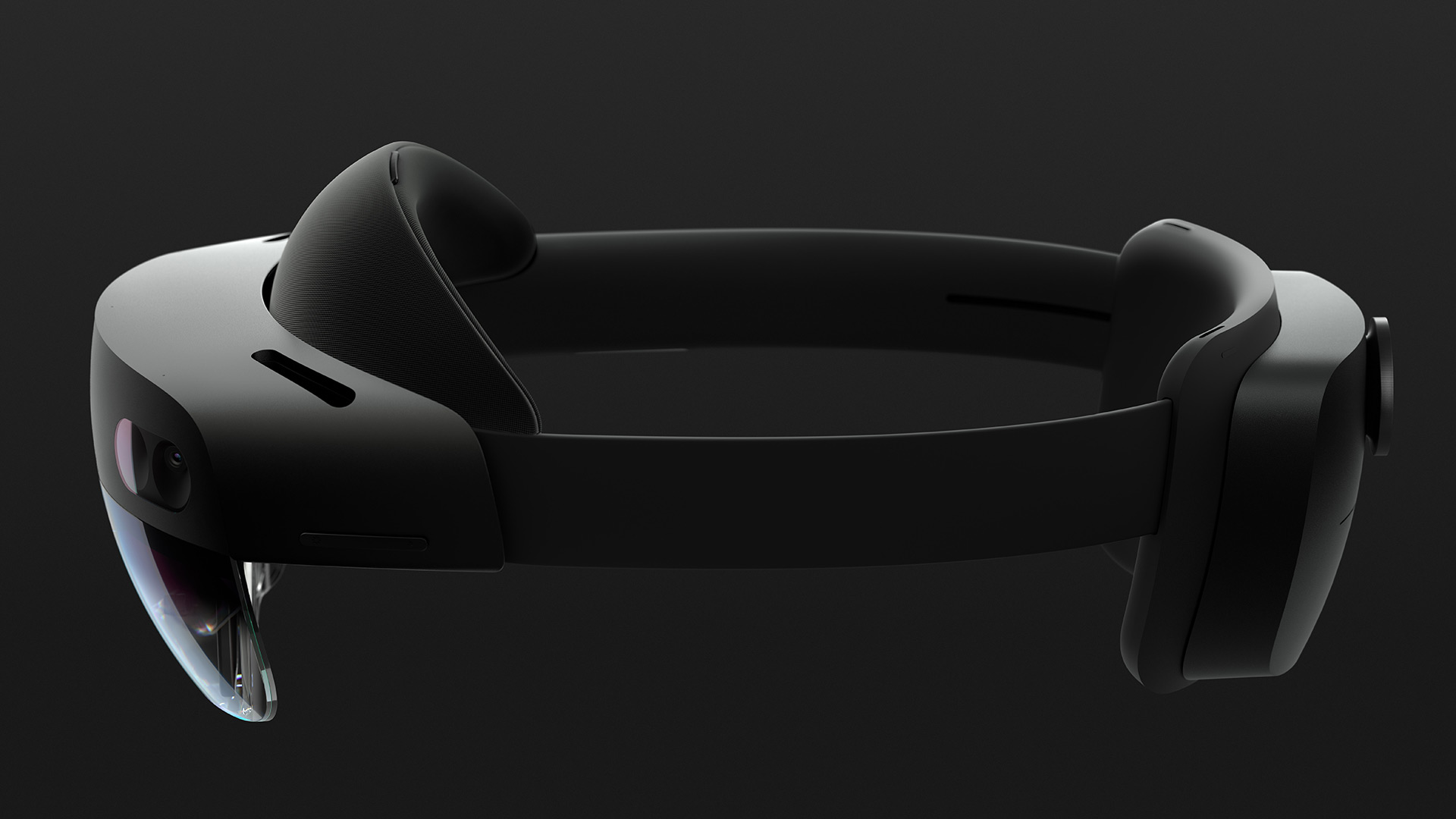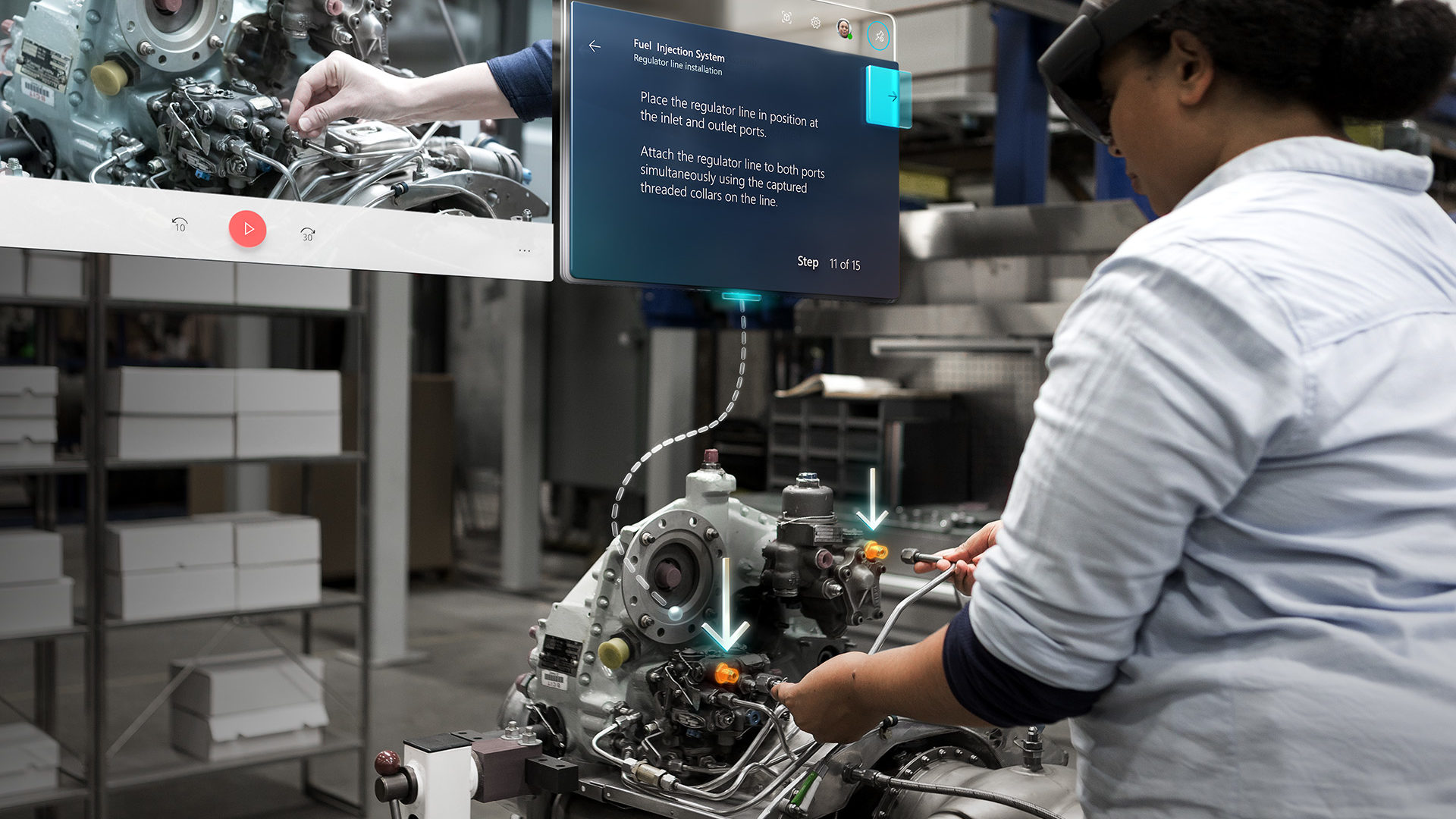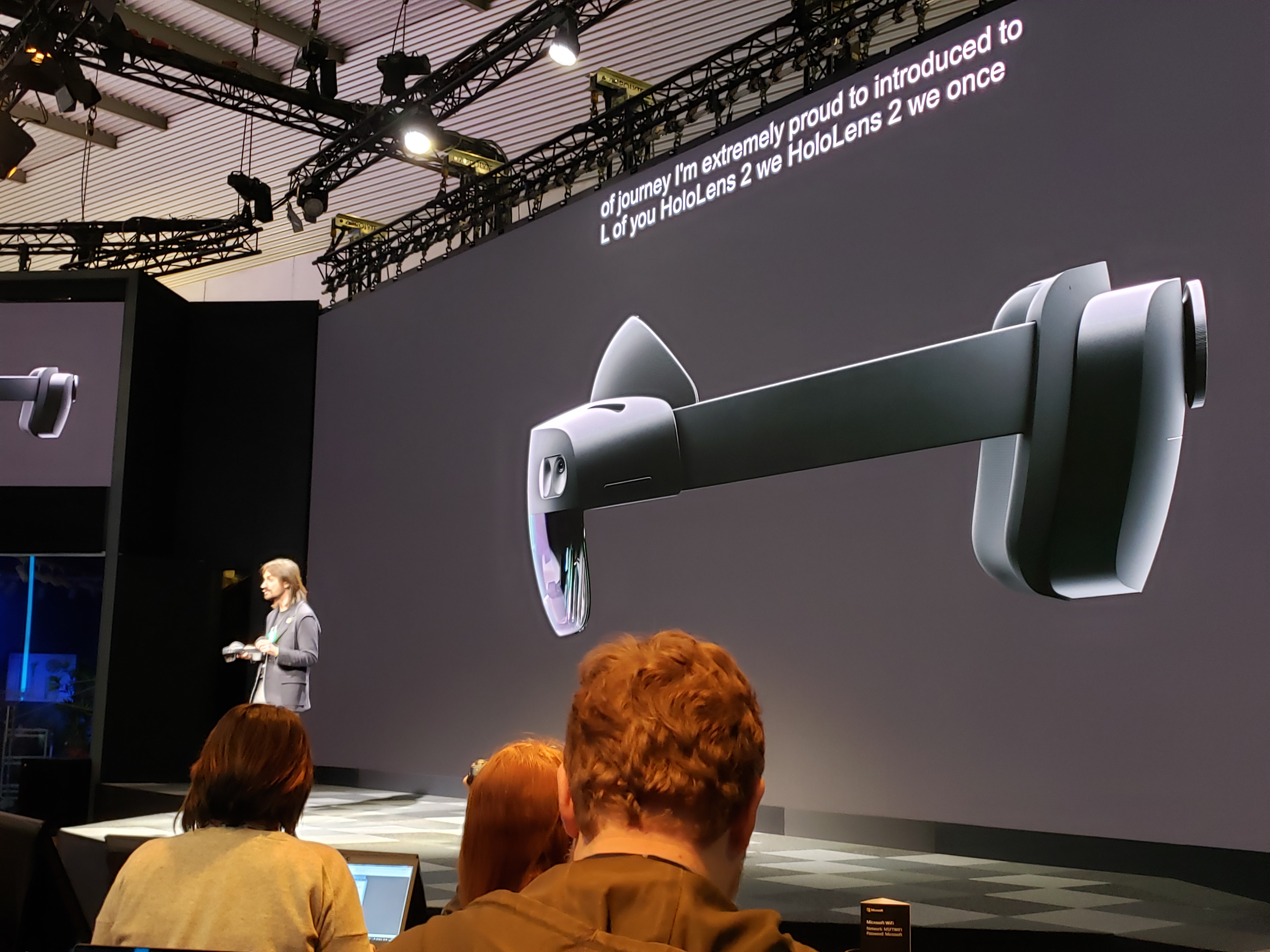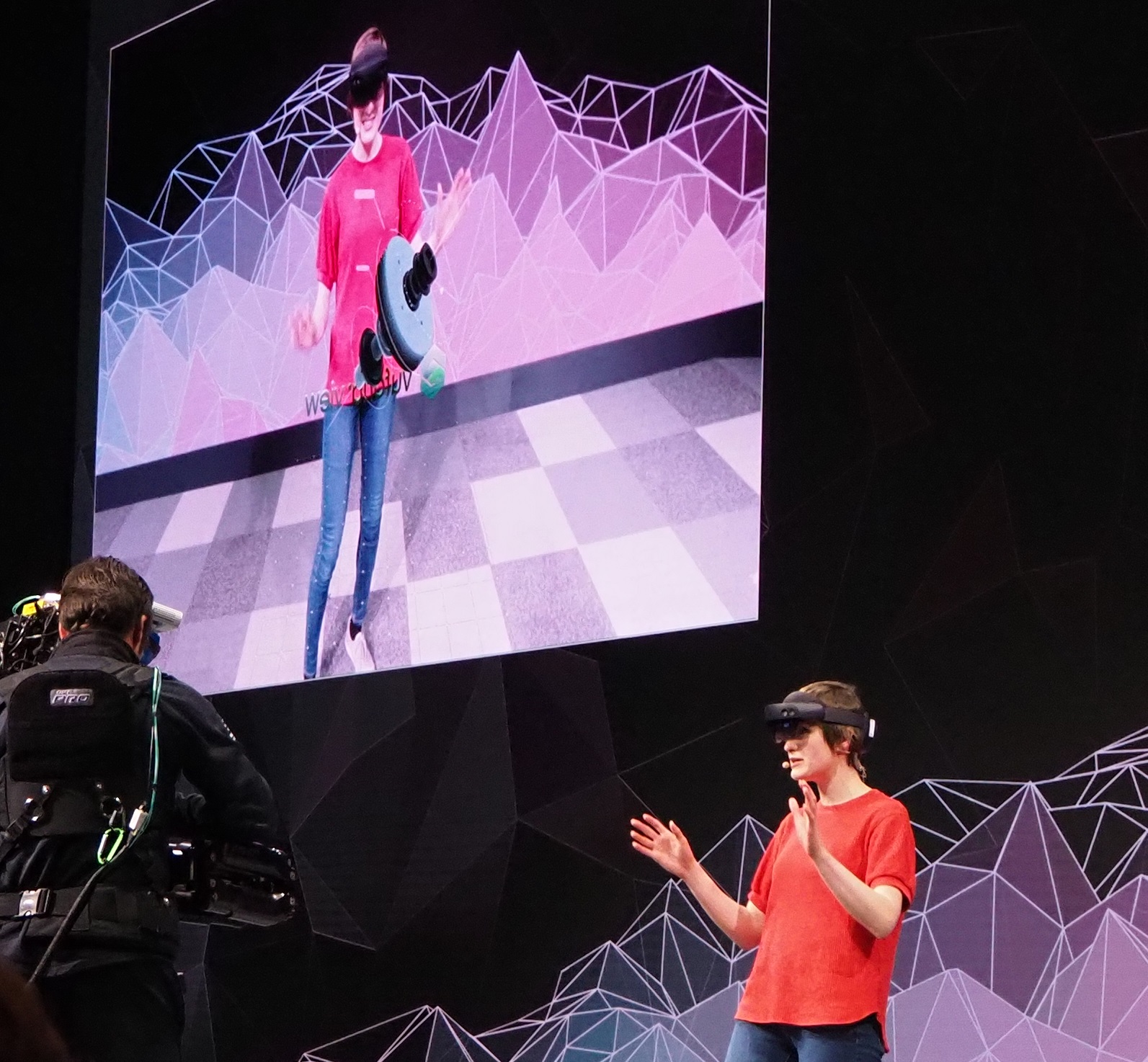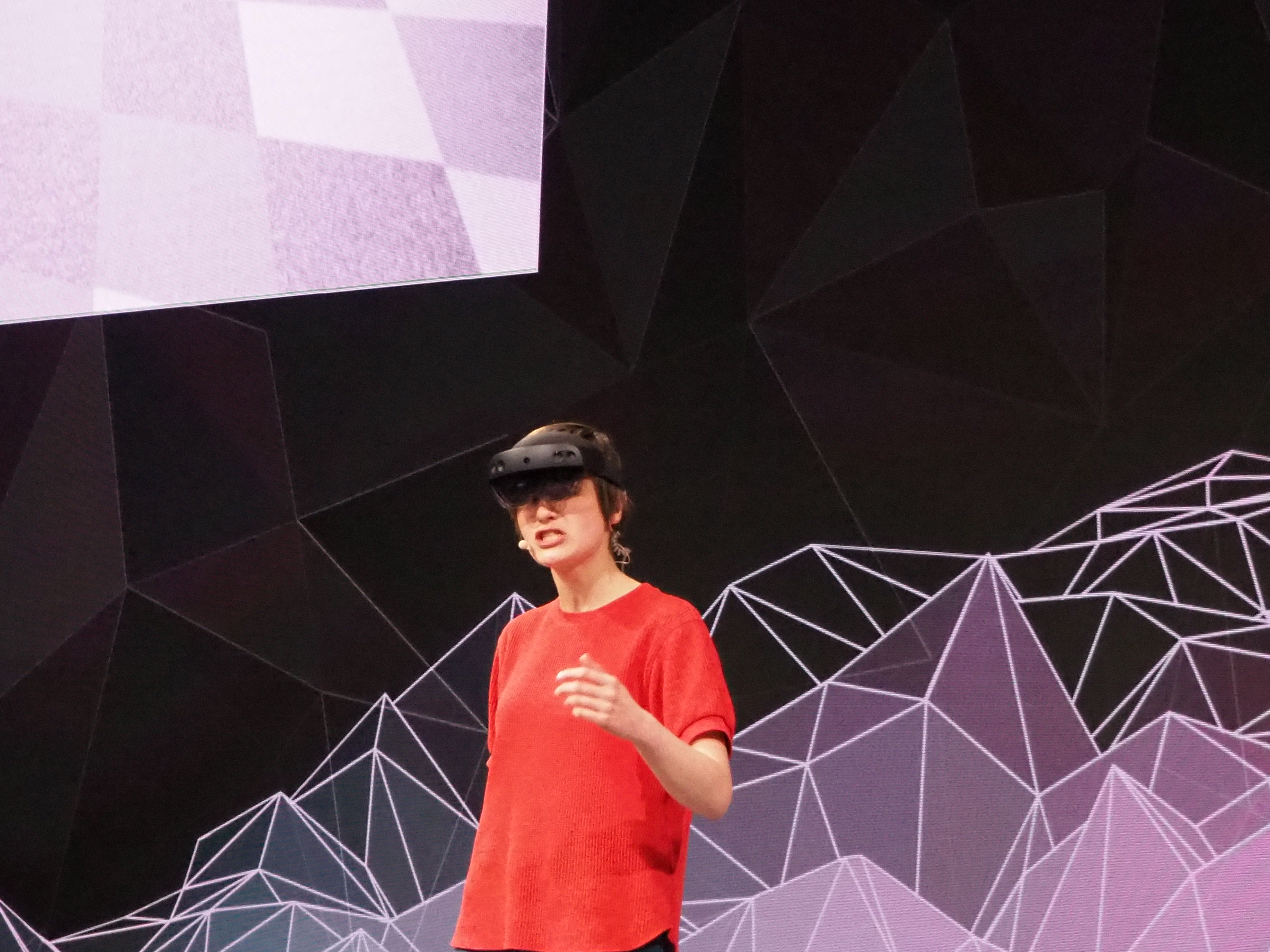When I first saw Microsoft’s HoloLens in 2015, it was clearly something new, and different — I found it pretty damn mind-bending. HoloLens was a fascinating mixed reality headset that overlaid VR images on top of the real world in new, high-tech ways and offered a crazy glimpse of the future. At the MWC 2019 conference in Barcelona Sunday night, the company unveiled the next generation version of the device. I was ready to be wowed.
“It’s the next chapter in our journey — say hello to HoloLens 2,” said Alex Kipman, inventor of the device and a technical fellow in Microsoft’s Cloud and AI group. But is it all that exciting?
The basics of the device look similar to earlier models. It’s a headset similar to the virtual reality headsets you’ve become familiar with, from companies like HTC and Samsung and Oculus. But Microsoft says it has put effort into making interaction with the device simpler, to help it blend into the background and become less obtrusive. It “works in a more human way,” the company explained, thanks to a slew of improvements.
For starters, it recognizes the user through the Windows Hello iris recognition system, and it recognizes your hands, creating fully articulated representations of them in the 3D virtual world. The device is also substantially lighter: The entire front is made of carbon fiber, and Microsoft changed around how the weight is distributed, more than tripling the comfort, it claims. Oh, and the design team rethought the look and feel of the product too, testing it on thousands of different heads, from people of all genders, races, and sizes, Microsoft says.
Technologically, it’s improved as well. HoloLens 2 includes a Qualcomm Snapdragon 850 chip, the same technology powering most flagship phones on the market. And it more than doubles the field of view while maintain 47 pixels per degree of sight.
“This is the equivalent of moving from a 720p TV to a 2K TV — for each of your eyes,” Kipman said.
Microsoft didn’t offer details on the technology beyond that, however, and has yet to offer pricing or release information about the new HoloLens 2. jYet Kipman was emphatic that it moves the needle from earlier generations: “For the first time, you’re going to feel what it feels like to touch a hologram, to interact with a hologram and to play with it, almost where you forget that this is a piece of digital content you’re looking at as opposed to it just existing in the real world.”
#HoloLens 2 in action, live at #MWC19 pic.twitter.com/QlDKiC4QXj
— Digital Trends (@DigitalTrends) February 24, 2019
To showcase the power of the HoloLens 2, the company brought a number of business partners on stage. These included companies that make industrial parts as well as more consumer centric companies — and from the gaming side, Tim Sweeney from Epic Games.
“I believe that AR is going to be the primary platform of the future, and it will have an intimate role in our lives,” he said. “Epic will fully support Microsoft’s HoloLens model,” he added. Epic is bringing it to all developers in May, he said.
This clearly isn’t a consumer product. At earlier product events for the HoloLens, Microsoft has stressed gaming and the potential of the device to shape consumer interactions with tech. But lately, it’s been all only about business. And businesses investigating the product will certainly be curious about Microsoft’s philosophy for software.
“We believe in an open app store model,” Kipman said. Although companies will have the power to create their own app stores, of course. “Principle 2: We believe in an open web browsing model.” The Edge browser will exist, but companies will be able to include their own — including native Firefox, which will come out of the box. Finally, the company believes in an open API model, he added.
HoloLens will be available for $125 per month. The cost for the enterprise package is being reduced from $5,000 to $3,000, Microsoft said at the event — a change developers will certainly appreciate. But in exclusive previews, CNET, The Verge, and Wired all said the price was $3,500, an increase from the cost of the initial developer release. Developers can place orders immediately. Microsoft did not say when HoloLens 2 would be released.
———————————————
The original story, replete with all the rumors and hints we have gathered, is below.
Release date and price

We won’t need to wait long for firm announcements from Microsoft about the HoloLens 2 and just what it’s going to look like. Alex Kipman, who’s in charge of the HoloLens project, sent out media invites for a press conference with him and CEO Satya Nadella, just ahead of the Mobile World Congress event on February 24.
The name “HoloLens” is not specifically mentioned in any of this content, but .. well, it’s easy to infer a lot from how this was announced and who it comes from. The lack of specific names could indicate that the next generation HoloLens may have different trademarking involved, or something else that Microsoft is saving as a surprise.
As for price, the HoloLens 2 won’t be cheap. The original developer edition costs $3,000, while the “commercial suite” starts at $5,000. We would expect the sequel to be a similar ballpark, but we won’t know for sure until MWC.
New teaser video released
2.24.19 #MWC19 – are you excited? I know I am…https://t.co/nO8apOLrGB pic.twitter.com/JXENF2nzEq
— Alex Kipman (@akipman) February 11, 2019
Along with the invites to a special event, Kipman also released a quick teaser video. This video does not explicitly show the HoloLens. As we noted, it actually looks like the marketing material for previous Surface devices, with an elemental style including melting metals and twining fibers.
So, what’s this all about? Well, it seems to indicate a focus on hardware updates, specifically when it comes to form and possibly processing power. It could indicate, for example, an upgrade to carbon fiber materials to make the headset more lightweight and comfortable. Of course, with videos like these it’s hard to tell exactly what they mean, but it does indicate that Microsoft is unveiling a new approach to the HoloLens — and is trying to hype people up.
A.I. and new sensors

Microsoft has already noted that the new HoloLens technology will include advanced A.I. tech. The Microsoft Research team specifically showed off a new HPU (holographic processing unit) at the Computer Vision and Pattern Recognition conference of 2017.
This new chip includes an A.I. co-processor that will help interpret the images that the HoloLens is “seeing” more accurately, which allows for better overlays and much faster response time (otherwise, data might have to be sent to the cloud for analysis, which would take much longer). The A.I. solution is so good it can recognize individual parts of the human hand while it’s moving — something important for, as an example, helping Navy soldiers practice loading armaments. This appears to borrow technology both from Microsoft’s Azure A.I. and from the now largely defunct Kinect gaming sensor.
The A.I. co-processor will also apparently be used to help with advanced speech recognition, which indicates that audio commands, interpretation, and even environmental sounds will be a bigger part of the next HoloLens experience.
New patent news points to a streamlined product

A Microsoft patent has also been discovered that clearly details plans for an upgraded HoloLens. According to these plans, the HoloLens will be used a single system for both mapping the real-world terrain while tracking objects that terrain and projecting CG images on top of that terrain.
This is important for a couple different reasons. First, it allows Microsoft to save room and make the HoloLens more compact — or at least make room for other hardware. Second, it helps increase the accuracy for harder tasks like following a bouncing ball or sensing depth in a complex environment (like a forest). Third, it’s quite possible that this will help lower the price of the HoloLens, which is badly needed: Commercially, the first HoloLens costs a whopping $5,000 to buy as a consumer. You can bet Microsoft wants to get that price down a bit if it wants to appeal at all to gamers and other individual buyers.
A brand new processor

We already mentioned the A.I. co-processor that’s sure to be included in the HoloLens 2, but it also looks like the primary processor could also see a significant change. While early rumors suggested that the HoloLens would use the Qualcomm Snapdragon XR1 platform, we now expect them to pick the Snapdragon 850 chip or something very similar.
These ARM-based chips are ideal for augmented reality applications, but it would be a shift from the Intel Atom CPU that the original HoloLens uses. However, we do expect Microsoft to use Windows Core OS for operation.
Editors' Recommendations
- Turns out Microsoft’s HoloLens 3 might not be dead after all
- Microsoft unveils Mesh, and with James Cameron, dives into mixed reality
- HoloLens 2 will have dark mode, 5G support when it launches globally this fall
- Microsoft’s futuristic HoloLens 2 headset is now shipping, starting at $3,500
- Microsoft’s new HoloLens hologram tech can do language translation

